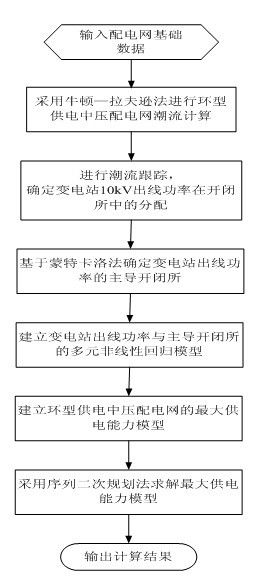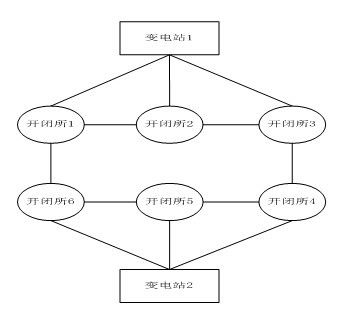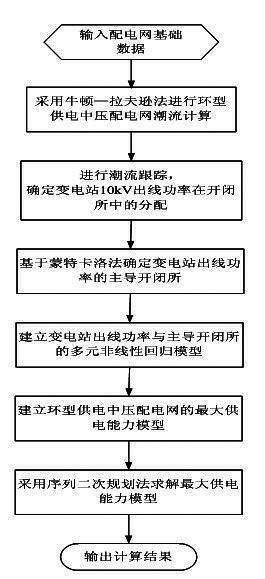Maximum load supply capability evaluation method of medium-voltage power distribution network for loop power supply
A technology of maximum power supply capacity and ring power supply, applied in electrical components, circuit devices, AC network circuits, etc., can solve the problems of large errors, large influence of equivalent models, and large results errors.
- Summary
- Abstract
- Description
- Claims
- Application Information
AI Technical Summary
Problems solved by technology
Method used
Image
Examples
Embodiment Construction
[0076] The technical solutions in the embodiments of the present invention will be clearly and completely described below in conjunction with the accompanying drawings in the embodiments of the present invention.
[0077] The present invention proposes a maximum power supply capacity model of a circular power supply medium-voltage distribution network based on a multivariate nonlinear regression curve model. The flow chart of the embodiment is as follows figure 1 As shown, now with figure 2 Take the example network shown as an example for illustration:
[0078] Step 1, input the basic data of the ring power supply medium voltage distribution network:
[0079] Generally, in the ring-type power supply medium-voltage distribution network, including substations, power plants, switching stations, etc., the basic data includes system lines, loads of units, switching stations, and component parameter information such as transformers. When dealing with the actual power grid, in add...
PUM
 Login to View More
Login to View More Abstract
Description
Claims
Application Information
 Login to View More
Login to View More - R&D
- Intellectual Property
- Life Sciences
- Materials
- Tech Scout
- Unparalleled Data Quality
- Higher Quality Content
- 60% Fewer Hallucinations
Browse by: Latest US Patents, China's latest patents, Technical Efficacy Thesaurus, Application Domain, Technology Topic, Popular Technical Reports.
© 2025 PatSnap. All rights reserved.Legal|Privacy policy|Modern Slavery Act Transparency Statement|Sitemap|About US| Contact US: help@patsnap.com



